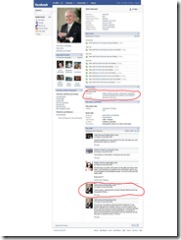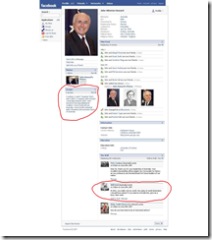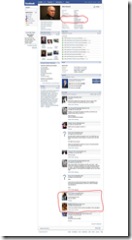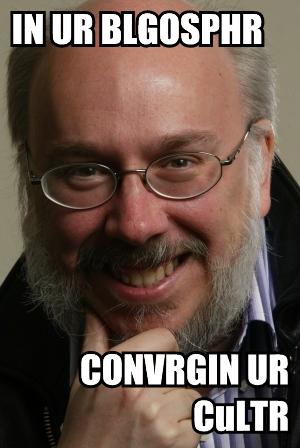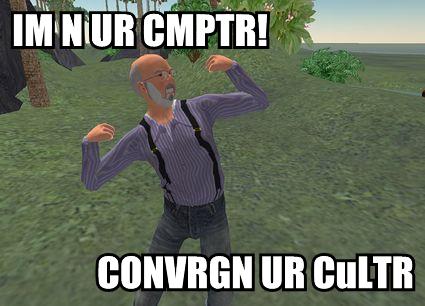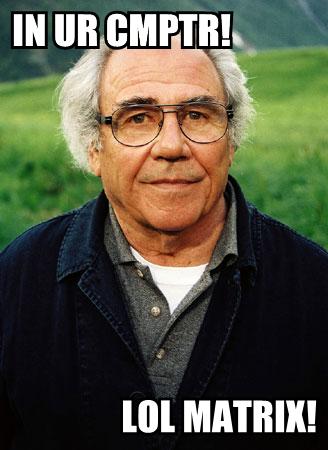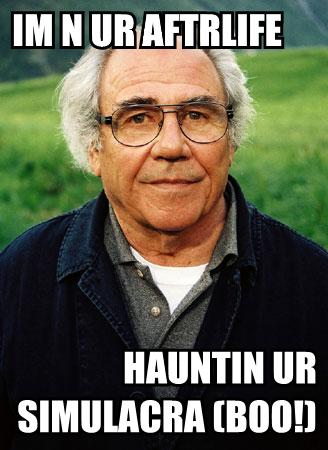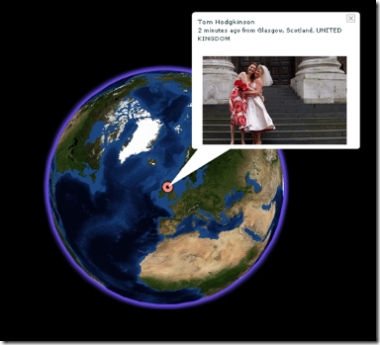Home » participatory culture (Page 28)
Category Archives: participatory culture
Facebook and Australian Politics?
Over the past month I’ve suddenly seen Facebook grow from an oddity to something on which the majority of my university-based friends appear. Since I spent some of yesterday pondering the oddities of US politics and digital culture, I thought I’d spend a little of today looking at Australian politics. For those of you not in the know, Australia has what amounts to a two-party political system, divided between Liberal (close to Republican/Tory parties) and Labor (close to the Democrat/UK Labor parties); the Liberal party is led by John Howard, who is our current Prime Minister, while the Labor party, after many years of leadership ambiguity, is led by Kevin Rudd.
Unlike the US (and a lesser extent the UK), mainstream press and politics in Australia really hasn’t embraced either the blogosphere or social networking as a means of promotion or gaining support (and Australian politicians can’t and don’t fund-raise in the explicit way US politicians do). That said, younger voters are clearly looking for some sort of connection with the political sphere, even if its not done through the same rhetoric of civil participation that comes through the US education and advocacy systems. So, that said, is either Australia’s Prime Minster or his Labor rival on Facebook? The answer, initially, appears yes to both, although after some scrutiny, the answer changes to yes for Rudd and no for John Howard – there are, in fact, three Howards, but all are fake.
Of the three Howards, two are obvious fakes, while one is more subtle, but still not authentic. Since this is a fun moment to think about digital literacy, I’ve taken screenshots of the three Howard profiles and circled in red the most obvious indicators that these aren’t authentic pages.
and John Howard #3 …
In contrast, Kevin Rudd’s Facebook page is rather dull, but clearly authentic. (I’ve just made a friend request, so if there’s anything exciting in friends-only land, I’ll write a little more.) It is worth noting that comments which cast John Howard as a sexual or ‘hot’ figure are unambiguously meant to be satirical, in contrast to the clips from the US mentioned yesterday which, while playful, aren’t necessarily ironic (although they might be, especially Hott4Hill).
Putting the Sex (back) into American Politics?
The process by which different US Democrats and Republicans vie for the right to be their party’s candidate for presidency has always fascinated me (admittedly, from afar, safe in the knowledge I don’t need to vote for any of these people). The race for 2004 bought out some impressive efforts in participatory culture (remember Jib Jab’s ‘This Land’?), and this years’ Hillary 1984 video promised more in the race for 2008. While the creativity is definitely out there, one trend which has been a little unexpected is the “I’ve got a crush on…” videos attached to the Democrat candidates.
First there was the self-styled ‘Obama Girl’ with her “I’ve Got a Crush on Obama” video:
The clip and the Obama Girl herself have gained a fair amount of attention in US media, most of which is linked to from Obama Girl’s website. The girl in the clip – Amber Lee Ettinger – didn’t create the concept (or sing the song; she’s lip-synching) but has become one of the key faces in Obama’s campaign. The story behind Obama Girl is found at the Barely Political website. Now, along similar lines but a little more disturbingly, Chuck Tryon has drawn my attention to the “Hott4Hill featuring Taryn Southern” clip, which runs a fine line between representing Hillary Clinton as a politician or a sexual icon(!):
And, of course, there’s a Hott4Hill blog to emphasise Taryn Southern’s efforts.While I’m still thinking about how all of this works (and wonder if these clips have the potential to damage campaigns as much as make them appealing for younger proto-voters) you might want to have a read of ‘The Power and Playfulness of Parody: Obama, Hip Hop and Misunderstanding’ by Bernie Heidkamp in Pop Politics which gives some context and perspective to the Obama Girl clip.
More LOL Theorists, Now with Self-Reflexivity!
I am more than litte pleased to see my two LOL Therorist Henry Jenkins pictures have come to Henry’s attention and he’s actually reposted them in his own blog!
Of course, that couldn’t possible be the end of the circle, so …
Make sure you continue to tune in to LOL Theorists for all the academic hijinx; or, if you’re really busy, perhaps just check out the Henry Jenkins channel! 🙂
LOL Theorists
In a fit of silliness, I find myself using the LOL CATS builder for terrible, terrible, theorist humour …
Where did this insanity come from? I blame Jean (Burgess, not Baudrillard!). (More here.)
Update: Henry Jenkins linked to the LOL Theorist mashups of himself! 🙂
Academic Ethics, Privacy and Transparency … all coming soon to YouTube!
Australia’s QUT has been in the grip of a very public controversy recently which dovetails between issues of freedom of speech, academic ethics and the transparency of university processes. The controversy came to light and media attention on 11 April this year when two QUT academics, John Hookham and Gary MacLennan, published an article in The Australian entitled ‘Philistines of relativism at the gates’. In it, Hookham and MacLennan very publicly took issue with the ethics of work being done by PhD candidate, Michael Noonan:
A time comes when you have to say: “Enough!”, when you can no longer put up with the misanthropic and amoral trash produced under the rubric of postmodernist, post-structuralist thought. The last straw, the defining moment, came for us when we attended a recent PhD confirmation at the Queensland University of Technology, where we teach. Candidate Michael Noonan’s thesis title was Laughing at the Disabled: Creating comedy that Confronts, Offends and Entertains. The thesis abstract explained that “Laughing at the Disabled is an exploration of authorship and exploitation in disability comedy, the culmination of which will be the creation and production (for sale) of a six-part comedy series featuring two intellectually disabled personalities. “The show, entitled (Craig and William): Downunder Mystery Tour, will be aimed squarely at the mainstream masses; its aim to confront, offend and entertain.” (Editor’s note: the subjects’ names have been changed to protect their privacy.) Noonan went on to affirm that his thesis was guided by post-structuralist theory, which in our view entails moral relativism. He then showed video clips in which he had set up scenarios placing the intellectually disabled subjects in situations they did not devise and in which they could appear only as inept. Thus, the disabled Craig and William were sent to a pub out west to ask the locals about the mystery of the min-min lights. […]
At the seminar we were told there was a thin line between laughing at and laughing with. There is no such thin line. There is an absolute difference that anyone who has been laughed at knows. We must admit with great reluctance that at the seminar we were alone in our criticism of the project. For us, it was a moment of great shame and a burning testimony to the power of post-structuralist thought to corrupt. It is not our intention here to demolish the work of Noonan, an aspiring young academic and filmmaker. After all, ultimate responsibility for this research rests with the candidate’s supervisory team, which included associate professor Alan McKee, the faculty ethics committee, which apparently gave his project total approval, and the expert panel, which confirmed his candidacy. […]
What we have instead is the reality that cultural studies is in the grip of a powerful movement that we call the radical philistine push. It is this same movement that has seen the collapse of English studies and the consequent production of graduates who have only the scantiest acquaintance with our literary heritage. It is also undermining the moral fabric of the university.
So, what starts with ethical questions about a particular thesis, quickly becomes a much more generic complaint about the corruption of education by poststructuralist and postmodern theory and approaches. I know nothing of the people writing or mentioned in this article, but have to say after reading the piece I wasn’t swayed; my sympathies were more with Michael Noonan than anyone else, because as a PhD candidate I know I would have been almost destroyed by such public denouncing of my work. This, I should add, is not a comment on the quality on the work being or proposed – I know nothing beyond the article above and the surrounding debate, and haven’t seen any of the footage mentioned – but rather a comment on the process and the reasonable expectation that any criticism of a candidate’s work be handled within the university as long as possible. I’m not saying there is never a case for ‘going public’ with dismay about certain research, but from what I’ve read I believe Hookham and MacLennan took that step far too early. More to the point, combining criticism of a specific project with a very generic attack on a particular body of theory and its influence on teaching seems a less than generous way of dealing with the work of a PhD candidate.
The issues raised here also beg serious questions about transparency and universities. There is a lot of talk about the need to transparency of research outcomes since (most) Australian universities are at least partially publicly-funded. I quite agree with that notion. However, I think the idea of the processes of a university being taken public under the rubric of transparency tend to skew what makes it into the public arena. Selectively releasing aspects of a process (such as an ethics review process and confirmation of candidature) around research which clearly relies on careful contextualisation is bound to produce a one-sided picture. Tellingly, when Hookham and MacLennan’s article was republished in Online Opinion, the were comments from a student – using the handle WWSBD – who’d had Noonan (the candidate) as a lecturer, praising his efforts to educate student about people with disability. Moreover, this is the only place I’ve seen Noonan himself comment publicly:
I am at the student at the centre of Hookham and MacLennan’s attacks.
I thank WWSBD for understanding and appreciating my work in its context. I appreciate the words of Anecdote, who understands that a work must be seen and placed in context before it should be attacked. And I am disappointed for bedwin, who has lost all respect for me on the basis of an uninformed and incorrect article.
Much has been assumed about my project, my integrity and my intentions. Very little of it is based on truth. The simple facts are these: the excerpts I showed at my PhD confirmation seminar were presented in the context of exploring and discussing issues of authorship and representation in disability. My project seeks to empower the disabled, to give them a voice through comedy. Each clip was prefaced with my own thoughts about whether or not this had been achieved.
As a sessional staff member at QUT, I can think of nothing more deplorable than attacking a student’s incomplete research in a public forum. Hookham and MacLennan have made no effort to read my PhD confirmation document (it was offered) and they rejected my attempts to meet and discuss their concerns.
To date I have not sought to respond to their attacks in print. But I refuse to be further bullied and vilified before the public, my peers and my students.
However, the story doesn’t end there. Earlier this month The Australian report that Hookham and MacLennan are now facing a disciplinary hearing at QUT for their public comments, with the university arguing that the two unfairly attacked the candidate and his supervisory team. Now, whatever their views, Hookham and MacLennan seem to have a reputation as inspirational teachers themselves, and the news of their censure galvanized some of the QUT student body to defend their actions on the basis of free speech. The student campaign is visible through it’s “Save Our Lecturers” MySpace page. Moreover, over at Martin Hirst’s blog, he has posted ‘Freedom of Speech disabled at QUT’ which points to this documentary which is now available at YouTube:
(Hirst is a friend of Hookham and MacLennan’s, and his post also contains the full text from Hookham and MacLennan’s original article in The Australian, as well as some additional commentary from The Australian and subsequent letters to editor.)
The YouTube documentary clip, by QUT student Adrian Strong, is very compelling; Hookham and MacLennan both come across as intelligent, compassionate teachers and academics who have good cause for concern. My point here is not to judge the debate being documented in this clip – although I imagine it would be extremely compelling for many people. Rather, in the era of participatory culture and digital media, this clip is indicative of a very profound change which can see debates and arguments that once would have remained closed suddenly being open to public viewing and public debate. In such an era, digital literacy is extremely important – the ability to create, edit and share such a clip is a key part of the ability to make a case in the public eye. It’s no surprise that QUT, which has Australia’s most renowned Creative Industries faculty, should be the source of the first such debate in Australia (to my knowledge, at least).
Illustrating my point, I just noticed another posted by the same YouTube user who posted the clip above (and thus, I presume, also be Adrian Strong) which talks in even stronger terms about a perceived campaign of censorship at QUT:
(Again, let me reinforce, I don’t know enough about the other things going on to really judge this debate, but I do know that the perception of censorship certainly doesn’t add to the reputation of any university. However, like the first clip, without any further rebuttal, this clip is likely to be very persuasive to viewers.)
Update: In ‘Dissenting dons out in the cold’, Andrew Fraser reports in The Australian that the saga ended with Hookham and MacLennan both being suspended without pay for 6 months from QUT.
Visualising the User-Driven Web
I was just pointed to Flickrvision, and I’m impressed. Flickrvision, and its older sibling, Twittervision, are program mashups by David Troy which combine the visualisation of Google Maps with the user-created data flowing out of Flickr and Twitter. There’s a ‘standard view’ in which individual Tweets or Flickr images are posted on a flat world map, but even more impressive for those visually-minded is the 3D version which inserts Tweets and Flickr photos continually onto a global map (which spins as needs be to show the origin of each post).
An example of Twittervision:
An example of Flickrvision:
Watching these globes spin, each showing a fragment of life around the world, is incredibly engaging. This is the user-driven web at its most visually enticing. I have to say, were I in charge of a Communications Studies or Media Studies department (which I’m not) and I could find a couple of spare monitors and computers (which, in all fairness, departments probably couldn’t), then I’d leave these running 24/7 in the front foyer; the best advertisement for the studying the user-driven web is watching it happen in all its visual glory, right in front of you!
